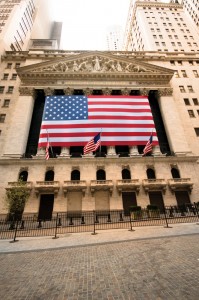
The culture-in-transition documented by sociologists Robert and Helen Lynd at the dawn of the industrial age has many parallels to these anxious times. A look at their era and ours:
THEN: Their two-year study of Muncie, Ind. – dubbed “Middletown” – found that Americans between 1890 and 1925 were struggling with the transition from a farm economy to the industrial era. The Lynds lamented the fact that the “cunning hand of the master craftsman” was being supplanted by “batteries of tireless iron men.”
NOW: Many Americans are lost in the transition from an industrial economy to the info-tech age and globalization. The tireless iron men are being supplanted by technology and computer-savvy workers in a brutally competitive global economy.
—
THEN: The Lynds found Americans to be hard workers who valued self-reliance, civic pride, patriotism and faith.
NOW: If they were to return to today, the husband-and-wife team would find the same values in Muncie – and throughout America.
—
THEN: The Lynds did not study the black population of Muncie, which accounted for 5 percent of the city’s population. They said there were not enough blacks in “Middletown” to justify the study, but critics called it a racial oversight.
NOW: The city has made great racial strides since the 1920s, when the Ku Klux Klan flourished in Muncie, but “the other side of Middletown is still too often ignored,” according to Hurley Goodall, a former state legislator and a prominent leader in the black community. He’s pushing for a thorough study of Muncie’s black community, which accounts for about 11 percent of the population.
—
THEN: The Lynds found a “division into the working class and business class that constitutes the outstanding cleavage in Middletown.”
NOW: After narrowing later in the century, the divide between “haves” and “have nots” is back. To get a sense of the income inequality in America, consider this: The share of total income going to the top-earning 1 percent of Americans went from 8 percent in 1980 to 16 percent in 2004.
—
THEN: New technology such as the automobile and radio created more leisure time for people, though the Lynds warned that the free time was being wasted in “passive” recreation. Interest in reading, public lectures and the arts sharply declined along with nearly every measure of a community’s health, including friendships between neighbors and church attendance.
NOW: Television helped weaken personal and community ties in the latter half of the 20th century. The jury is still out on whether the Internet will improve society more than it hurts.
—
THEN: The people of Muncie could no longer pretend they were isolated because new media had helped broaden their views beyond local news. “The community was bombarded – through newspapers, magazines, popular books, radio broadcasts, traveling preachers, salesmen and promoters – by a continuous barrage of exotic ideas and projects,” according to “Middletown Families,” a 1982 follow-up to the Lynds’ study.
NOW: The Internet and other new technologies give Americans access to a world of information – heretofore known as “a continuous barrage of exotic ideas and projects.”
—
THEN: Some people thought Americans were becoming too permissive, but the Lynds also noted an enthusiasm for a more sex-soaked popular culture, according to Jim Connolly, director for the Center for Middletown Studies.
NOW: A similar paradox exists today in which complaints about permissiveness are exceeded only by celebrations of it in mass culture, Connolly says.
—
THEN: The Lynds documented increased cynicism toward politics. Voter turnout was down and well-educated young people were choosing the private sector over public service in rising numbers.
NOW: Polls show the public has lost faith in nearly every U.S. institution, including the military, schools, organized religion, the media, businesses and the government. Two positive signs: Young adults are more involved in public service than their parents were, and voter turnout may be on the rise.
—
THEN: The Progressive Movement grew out of a desire to cure many ills of American society that had developed during the great spurt of industrial growth.
NOW: Polls show Americans crave post-partisan politics that effectively address society’s problems.